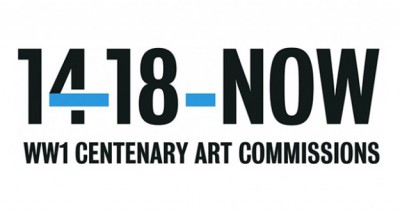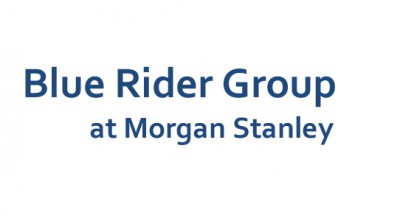About the Exhibition
Flow Separation is a commission by New York-based artist Tauba Auerbach (b. 1981, San Francisco, California), which transforms the historic Fireboat John J. Harvey into a contemporary “dazzle ship.” Invented by British painter Norman Wilkinson during World War I, the original dazzle patterns were painted onto ships to optically distort their forms, confusing enemy submarines tracking their distance, direction, and speed. With their geometric shapes, the dazzle designs were heavily indebted to both animal camouflage and avant-garde movements like Cubism, Futurism, and Vorticism. Thousands of vessels were dazzled in the U.K. and U.S., including in New York City at the Brooklyn Navy Yards.
Auerbach is known for her painterly experimentation, often playing with various techniques to explore perception and dimensionality. Her dazzle design draws inspiration from fluid dynamics and the forms found in wake patterns left behind objects as they move through water. Auerbach created her design for the surface of the boat through the process of marbling paper, floating inks on a fluid bath and combing the surface to create various wake patterns before transferring them on to paper. The fireboat also flies a flag diagramming “flow separation” — the phenomenon when areas of fluid in a wake move backwards, creating eddies. By incorporating the movement and behavior of water into the design, Auerbach references how the fireboat travels through water as well as how water moves through the belly of the vessel itself.
2018 marks one hundred years since the end of World War I. Flow Separation artfully threads together notions of innovation, technology, and abstraction, while it also invites us to remember this devastating world war.
The exhibition is curated by Public Art Fund Adjunct Curator, Emma Enderby.
@PublicArtFund #FlowSeparation #DazzleShip
Flow Separation is co-commissioned by Public Art Fund, New York City’s leading presenter of dynamic outdoor art free of charge to the public, and 14-18 NOW, the United Kingdom’s arts program for the centenary of World War I. Since 2014, the London-based organization has commissioned four Dazzle Ships throughout the U.K. Auerbach’s dazzled vessel is the first U.S.-based ship and the final vessel in the series before the 100th anniversary of the end of World War I on November 11, 2018.
Presenting Sponsor: Bloomberg Philanthropies
Location
Image Gallery
Visiting the Exhibition
Exhibition Dates: July 1, 2018 – June 1, 2019
The floating work of art is viewable from land 24 hours a day through June 1, 2019. The optimal viewing location is at the adjacent Pier 64.
Dock Locations:
** Updated locations as of August 28, 2018
– July 1 – September 23, 2018: Brooklyn Bridge Park Pier’s 6
– September 24, 2018 – June 1, 2019: Hudson River Park’s Pier 66a
Boat Trips (July 14 – October 7):
Boat trips will take place July 14 – October 7, 2018 on most Saturdays and Sundays (see upcoming trip schedule below) and last 45-60 minutes; they will start and end at the same location. The capacity of each trip is 75 people, and tickets will be released free of charge to all members of the public at PublicArtFund.org and Fireboat.org starting in mid-June. Reservations are first come, first served.
Saturdays
Boat trips: 4:30-5:30pm and 6:00-7:00pm
Sundays
Boat trips: 12:00-1:00pm and 1:30-2:30pm
*Occasionally, the boat may be away from its pier at an unscheduled time for refueling, cleaning, etc.
About the Artist
Tauba Auerbach (b. 1981 in San Francisco, CA) has exhibited internationally in one-person exhibitions such as The New Ambidextrous Universe (2014) at the Institute of Contemporary Arts, London, and Tetrachromat (2011) that opened at Bergen Kunsthall, Norway, and traveled to Malmö Konsthall, Sweden, and Wiels Contemporary Art Center, Brussels. Her work has also been exhibited in a number of major museum shows, notably INDUCTION: Tauba Auerbach and Éliane Radigue at MOCA Cleveland (2018); Reciprocal Score: Tauba Auerbach + Charlotte Posenenske at Indipendenza Studio, Rome, Italy (2015); DECORUM: Carpets and tapestries by artists at the Musée d?Art Moderne, Paris, France (2014-15); Lifelike at The Walker Art Center, Minneapolis, Minnesota (2012); The Indiscipline of Painting at Tate St. Ives, Cornwall, England (2011-12); the 2010 Whitney Biennial; Greater New York at MoMA PS1, New York (2010); and Younger Than Jesus at the New Museum, New York (2009). In 2011 she received the Smithsonian Artist Research Fellowship Award. She earned a BA in Visual Art from Stanford University in 2003. Tauba Auerbach is represented by Paula Cooper Gallery, New York.
About Fireboat John J. Harvey
The historic Fireboat John J. Harvey launched in 1931 and served New York Harbor until it was retired in 1994. The boat then became a national treasure on September 11, 2001 when the boat’s crew pumped water for 80 hours and evacuated people from Lower Manhattan. Today, the fireboat is overseen by a nonprofit organization that raises awareness about the importance of historic vessels and offers public access to the harbor and training in new skills, while preserving an important piece of New York City history. Fireboats similar to the John J. Harvey played an integral role during World War I as they were used to guide Navy vessels, including ships that were dazzled, out of New York Harbor. To realize Auerbach’s new commission, the exterior surface of John J. Harvey is being restored, stripping it of its decades-worth of chipped paint and rust, and recoating with layers of fresh paint, ensuring that it will endure for decades to come. Following the exhibition, the fireboat will be repainted in its original, historic paint configuration.
History of Dazzle Ships
Invented during World War I, dazzle camouflage (also known as razzle dazzle in the U.S.) was painted onto thousands of ships both in the U.K. and U.S. Its development is credited to the British marine artist Norman Wilkinson, who in 1917 claimed that painting ships with geometric shapes in contrasting colors — interrupting and intersecting each other — would make it difficult for enemy vessels to target them. Taking cues from both animal camouflage and avant-garde movements such as Cubism, Futurism and Vorticism, dazzle — unlike traditional camouflage — was used to confuse and disorient ships rather than to conceal or hide.
Dazzle was not restricted to a style but a strategy, resulting in thousands of different designs from the most common “zebra” scheme to experimental designs like the “Watson-Norfolk” scheme. Floating in New York Harbor, these dazzled ships were described by journalists as “cubist paintings,” “a futurist’s bad dream,” and “a floating art museum.”
By the time dazzle camouflage came into effect, in the most active periods, an average of 8 ships a day were being sunk — contributing to the over 37 million lives lost in the 4-year world war.
Rangefinders
Used on German submarines during the war, rangefinders were a manual optical mechanism that computed the range of a target. The operator adjusted the device until the two half-images of the target lined up to complete the picture. Dazzle, with its sliced and repeating patterns, made the two halves difficult to align, looking confusing even when they did. This made the targeted vessel’s distance, direction, and speed difficult to calculate.
Contemporary Dazzle Ships
The contemporary Dazzle Ship series, co-commissioned by 14-18 NOW with Liverpool Biennial and supported by Bloomberg Philanthropies, has seen Dazzle Ships in London (Tobian Rehberger), Liverpool (Carlos Cruz-Diez and Sir Peter Blake) and Edinburgh (Ciara Philips) engaging over 13 million people to date. Auerbach’s dazzled vessel is the first U.S.-based ship and the final vessel in the series before the 100th anniversary of the end of World War I on November 11, 2018.
For more information on the Dazzle Ship series, visit www.1418now.org.uk.
 Menu
Menu


